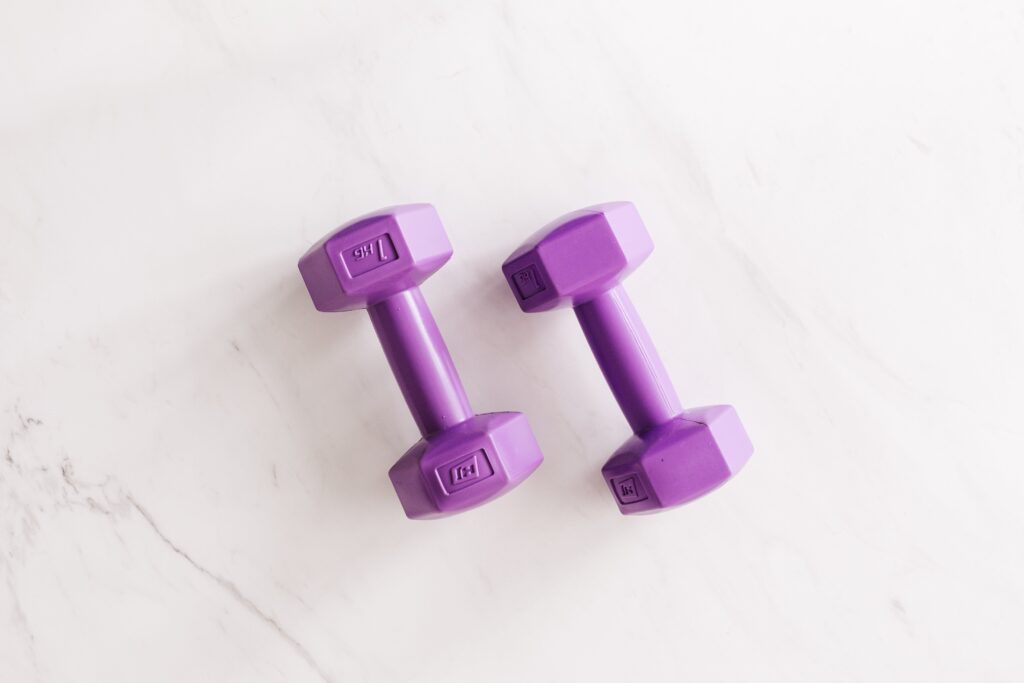Women and Strength Training: Will It Actually Make You “Look Like A Man”?
The mindset that weightlifting will make a woman look masculine has kept women out of the weightlifting section of the gym for decades, and we are here to debunk this myth!
Every time you step into a gym, a familiar pattern emerges—men gravitate toward the weights, while women dominate the cardio machines and exercise classes. This divide is often fueled by the myth that lifting weights will make women look bulky or overly muscular. The reality is, that building muscle mass is a challenging process that takes time, dedication, discipline, and most of all, work. Even men, who have far higher testosterone levels, must commit to intense training, meticulously monitor their diet1 and supplements, prioritize sleep and recovery, limit alcohol, and sometimes even resort to performance-enhancing substances to build a highly muscular physique. If gaining muscle were easy, every man in the gym would look like a professional bodybuilder! The truth is, women won’t accidentally bulk up by lifting weights—it takes far more effort than simply picking up a dumbbell or hitting the machines a few times a week.
So, will strength training make women look like a man? No, strength training will not make women look like men! However, it has the power to transform both your body and mind, improving overall health, confidence, and resilience.
What Happens When Women Strength Train
- Increase muscle mass
- Increase metabolic rate
- Improve mobility, strength, and performance
- Build stronger bones and reduce inflammation
- Improve self-confidence

Important note: We all love our accessories of many colors, but when it comes to weight lifting, those cute purple 5lb dumbbells are not going to cut it. To build strength and see results, women need to lift to their max capacity, which will increase the longer you train. Don’t shy away from curling 15-20lb dumbbells or shoulder pressing 30-40lbs or more. The goal here is to reach efficient muscle fatigue, which won’t happen with ultra-light weights.
1. Increase Muscle Mass
Why is this important? First and foremost increased muscle mass is directly correlated to better overall health. As of November 2023, the United States Census Bureau stated that approximately 37 million Americans (adults and children) have diabetes2, and currently 42.4% of Americans are obese3. It is only a matter of time before over half of the population is obese. This is where muscle mass comes in to save the day…and also the world.
Your liver and skeletal muscles store glucose as glycogen. Without enough muscle mass—achieved through regular strength training—your body’s capacity to store glucose is limited. This leads to excess glucose in the bloodstream, causing blood sugar to rise and prompting the pancreas to release more insulin. Over time, this can result in insulin resistance, diabetes, and increased fat storage. Conversely, more muscle mass provides a larger reserve for storing carbohydrates, helping your body better manage blood sugar levels and reducing the risk of obesity, diabetes, and related health issues.
2. Increase Metabolic Rate
Exercise burns calories—everyone knows that. However, what is often overlooked is that increased muscle mass also burns calories. Muscle tissue is metabolically active, meaning it requires more energy to maintain, unlike fat tissue, which simply persists without needing extra calories.
The more muscle mass you have, the more calories your body uses to maintain it, leading to a higher metabolic rate and increased daily calorie burn. Unlike cardio, which only burns calories during the exercise itself, strength training has lasting effects. After a strength workout, your body can continue to burn extra calories for up to 72 hours, thanks to the energy needed to maintain and repair muscle tissue.4.
So ladies, pick up those heavy weights and speed up that metabolism!

3. Improve Mobility, Strength, and Performance
You may not realize this, but having more muscle mass makes life’s tasks easier. Your muscles play an integral role in your ability to perform the routine tasks of life. The higher your level of muscular fitness the less likely you are to become fatigued or risk injury performing your daily activities.
Strength training helps prevent weight gain and stiffness as you age. Studies show that about 30% of people over 70 struggle with everyday tasks like getting out of bed, walking, or climbing stairs5. Regular strength training can help you avoid these issues.
Additionally, weight lifting serves as a natural remedy for tight, achy joints. The movement involved in lifting helps loosen your joints, reducing pain and inflammation while boosting mobility. Research indicates that individuals with arthritis who incorporate weightlifting experience less joint pain than those who do not6.
4. Build Stronger Bones and Reduce Inflammation
Another common myth is that strength training is only for the young. This is far from the truth! It is essential for women of all ages to engage in strength training. As we age, our bone mass typically decreases, but strength training can counteract this effect. Not only does weight training build muscle, it also strengthens bones. The resistance applied during weight lifting creates micro-tears in both muscle and bone tissue. The body repairs and rebuilds7, these tissues, resulting in stronger muscles and denser, more resilient bones over time.
Osteoporosis who? Broken hip? Not today! As if that wasn’t good enough, several studies8 have shown reduced amounts of inflammation and inflammation-related diseases (including cardiovascular disease and Type 2 Diabetes) in individuals who routinely lift weights or perform resistance training.
5. Improve Self-Confidence
It is well known that a hard day’s work brings about a sense of pride and accomplishment. A hard workout in which you have pushed yourself to the max and worked as hard as your body will allow also brings about those same feelings. When you exercise your body releases chemicals called endorphins. As Elle Woods so gracefully put it, “endorphins make you happy. Happy people just don’t shoot their husbands…they just don’t”. While not shooting your husband is indeed a great benefit of exercise, another benefit is that you’re happy…with yourself. Strength training will result in a sense of better self-worth, self-respect, and self-confidence. Because today you’ve worked hard, and that’s something to be proud of.

Women and Strength Training
So, ladies, let’s shift our focus toward becoming stronger, healthier versions of ourselves. Strength training is not only transformative but also empowering. Embrace lifting heavier weights and pushing yourself to achieve new personal records (PRs). Rest assured, you won’t develop a masculine appearance—instead, you’ll sculpt a toned physique, boost your metabolism, and improve both your physical and mental well-being. Strength training also enhances mobility, reduces joint pain, and makes everyday tasks easier. It’s time to redefine strength and unlock your full potential—because a strong, capable you is the best version of you!
Supporting Research
- Are You Eating Enough? The Proven Consequences Of A Low-Calorie Diet. Human Health Co. (2024, May 10). https://humanhealthco.com/are-you-eating-enough-the-effects-of-a-low-calorie-diet/ ↩︎
- Bureau, U. C. (2023, November 2). National Diabetes Month: November 2023. Census.gov. https://www.census.gov/newsroom/stories/diabetes-month.html#:~:text=%E2%80%9COver%2010%20percent%20of%20Americans,of%20developing%20this%20chronic%20condition. ↩︎
- U.S. Department of Health and Human Services. (2021, September). Overweight & Obesity Statistics – Niddk. National Institute of Diabetes and Digestive and Kidney Diseases. https://www.niddk.nih.gov/health-information/health-statistics/overweight-obesity#:~:text=Adults,-Age%2Dadjusted%20percentage&text=the%20above%20table-,Nearly%201%20in%203%20adults%20(30.7%25)%20are%20overweight.,obesity%20(including%20severe%20obesity). ↩︎
- McCall, P. (n.d.). 7 things to know about excess post-exercise oxygen consumption (EPOC). Excess Post-Exercise Oxygen Consumption (EPOC) | ACE Blog. https://www.acefitness.org/education-and-resources/professional/expert-articles/5008/7-things-to-know-about-excess-post-exercise-oxygen-consumption-epoc ↩︎
- Freedman VA, Martin LG. Understanding trends in functional limitations among older Americans. Am J Public Health. 1998 Oct;88(10):1457-62. doi: 10.2105/ajph.88.10.1457. PMID: 9772844; PMCID: PMC1508476. ↩︎
- Gombera, M. (2024, January 19). How does lifting impact your joints?. Mufaddal Gombera, MD. https://www.gomberamd.com/blog/how-does-lifting-weight-impact-your-joints-21917.html#:~:text=Strength%20training%20is%20also%20a,ll%20experience%20joint%20pain%20later. ↩︎
- Qin H, Jiao W. Correlation of muscle mass and bone mineral density in the NHANES US general population, 2017-2018. Medicine (Baltimore). 2022 Sep 30;101(39):e30735. doi: 10.1097/MD.0000000000030735. PMID: 36181112; PMCID: PMC9524880. ↩︎
- Calle MC, Fernandez ML. Effects of resistance training on the inflammatory response. Nutr Res Pract. 2010 Aug;4(4):259-69. doi: 10.4162/nrp.2010.4.4.259. Epub 2010 Aug 31. PMID: 20827340; PMCID: PMC2933442. ↩︎






